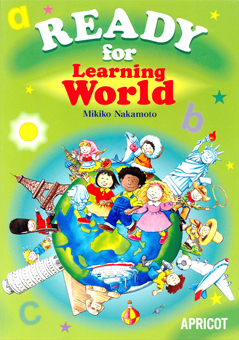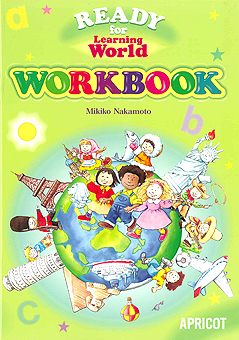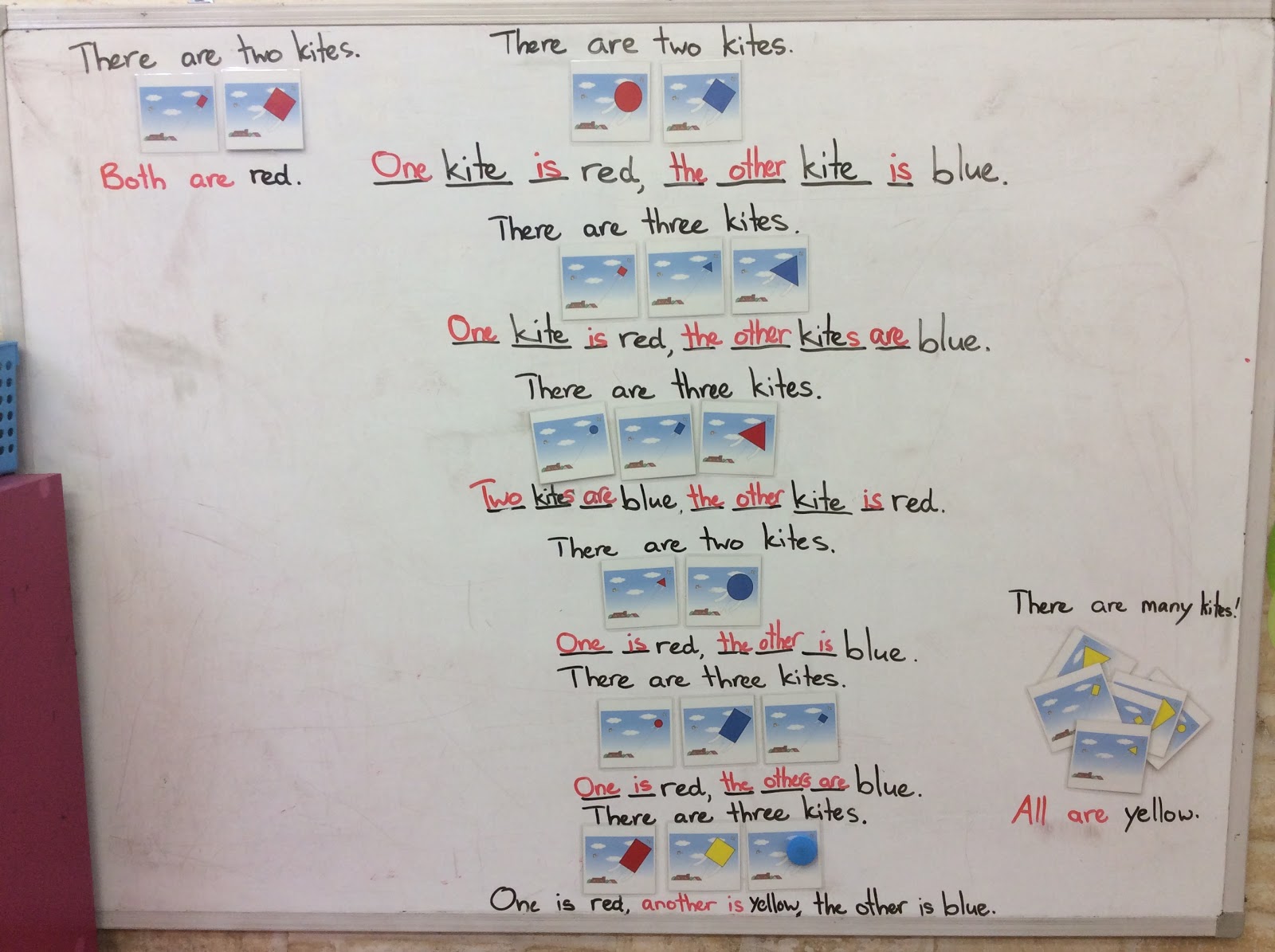

- 54. 10 Useful Pieces of Advice for Teaching with LEARNING WORLD #9 & 10
- 55. “Happy New Year!” “I don’t say that.”
- 53. Halloween 2019
- 52. READY Workbook Pg. 17
- 51. English-Uplift 1-Day Seminars
- 50. READY Workbook - vocabulary copying activity
- 49. 10 Useful Pieces of Advice for Teaching with LEARNING WORLD #8
- 48. 10 Useful Pieces of Advice for Teaching with LEARNING WORLD #7
- 47. 10 Useful Pieces of Advice for Teaching with LEARNING WORLD #6
- 46. 10 Useful Pieces of Advice for Teaching with LEARNING WORLD #5
- 45. 10 Useful Pieces of Advice for Teaching with LEARNING WORLD #4
- 44. 10 Useful Pieces of Advice for Teaching with LEARNING WORLD #3
- Kindergarten aged students
- Lower Elementary-school aged students
- Upper Elementary-school aged students
- Junior High and older students
- Others
30. DRAW & LABEL
Once a week I have a 5 year old girl who has been coming to English lessons for 2 years. She joins a class of other students more or less the same age as her who then go home 1 hour before she does. So I have a weekly 1 hour one-on-one with her. We often spend this time working on her reading skills.
Last week she was feeling tired and not very motivated (perhaps both of us?) so I simply gave her a large piece of paper to draw a picture – a picture of anything.
Sitting and interacting with her as she drew, she showed me her artistic impressions of a recent sports festival. As she worked I wrote the vocabulary items of her pictures on small papers.
Once her pictures were finished I handed her the papers and a glue stick: ”Please glue these papers onto your picture”.
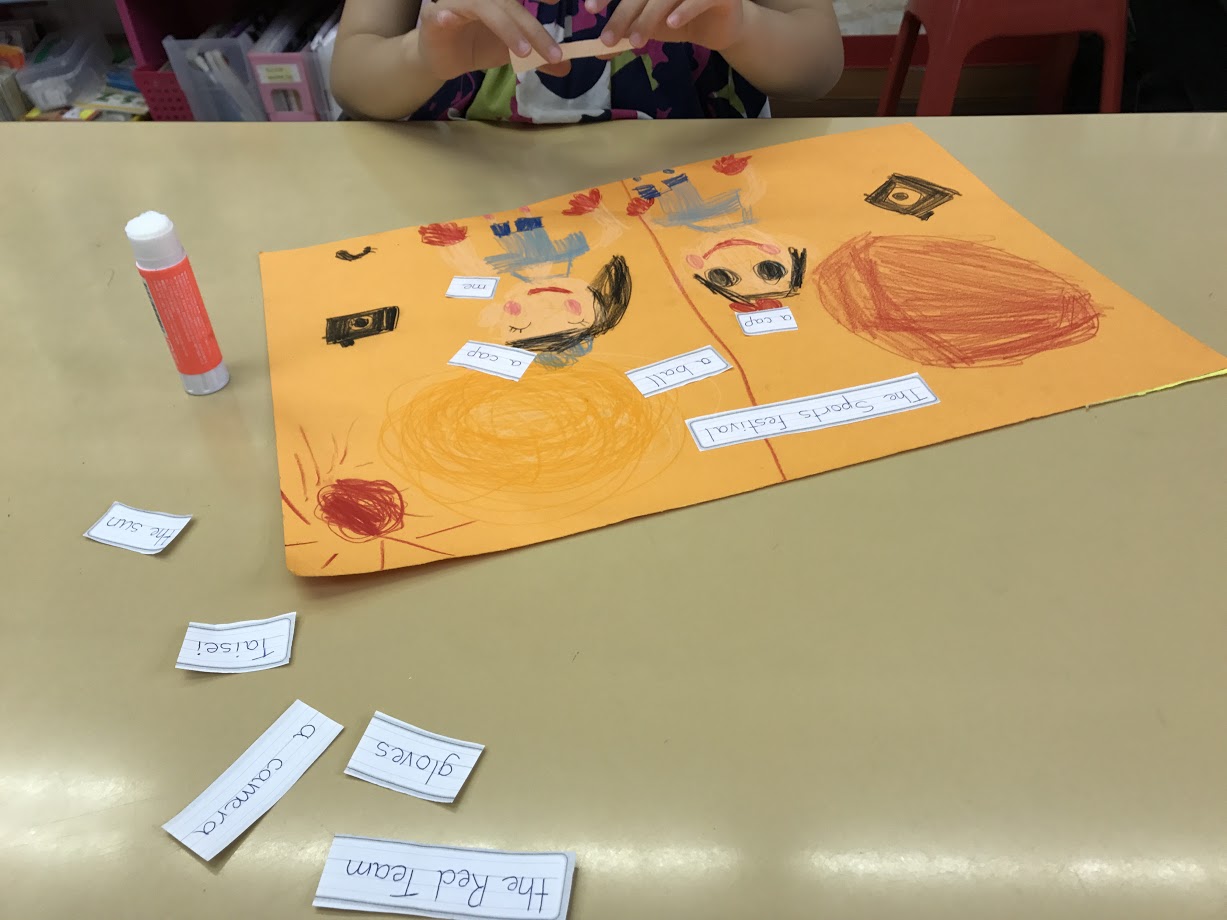
Now, for a young learner who had never seen the written English for much of the vocabulary in her picture, I had expected this task to be quite challenging. But to her credit she employed basic phonics knowledge and 3-letter word reading experience to make logical guesses on what each paper said.
She was able to glue all the English papers onto her picture without my assistance.
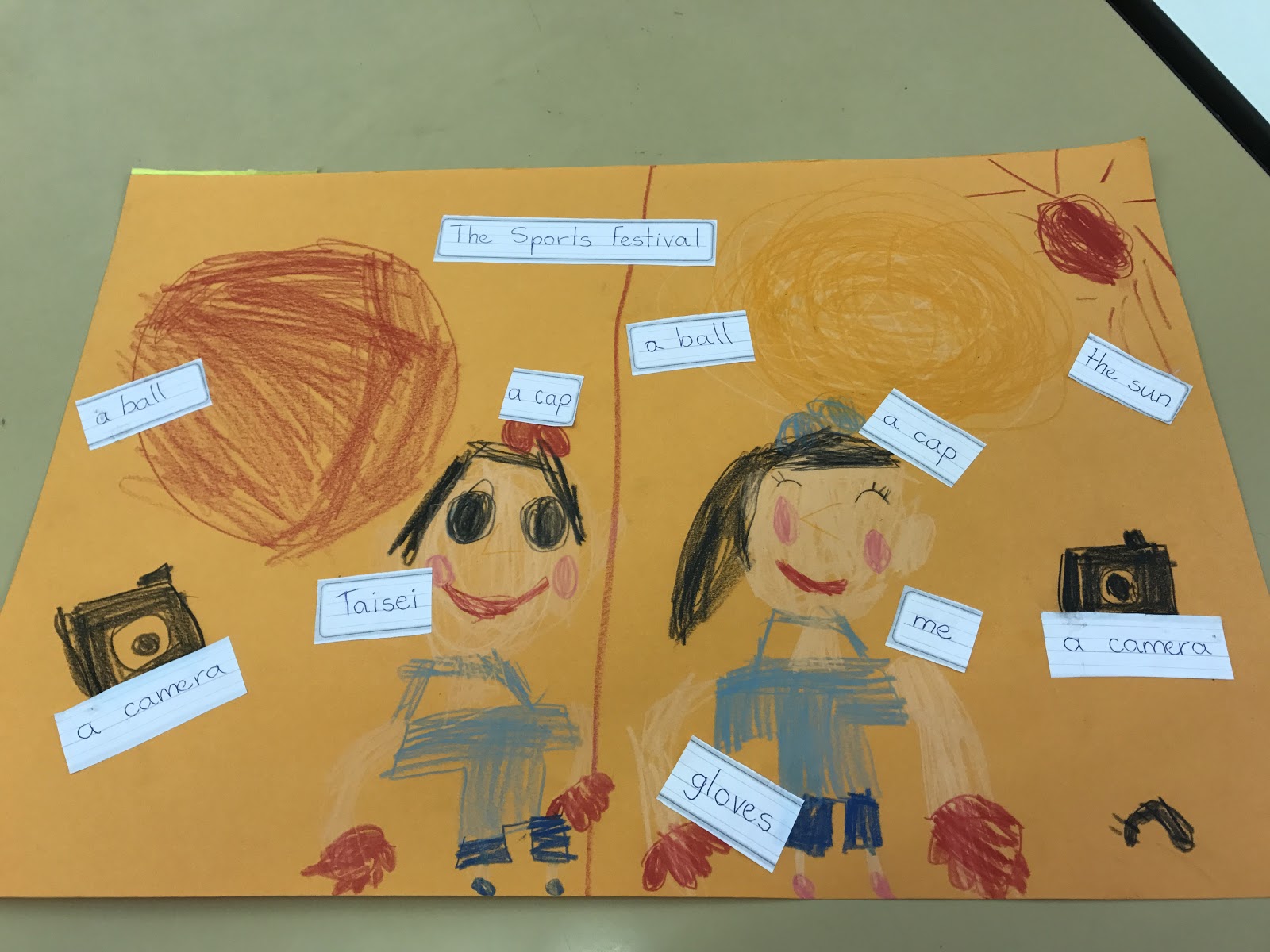
I believe she enjoyed the activity because she had the freedom to choose the content and she felt success in her ability to read all of the papers. Towards the end of the hour I checked her ability to read these individual words again on the whiteboard.
Despite both of our lack of motivation at the start of the hour, we had together made our time quite productive!
29. ACHIEVEMENT TARGETS
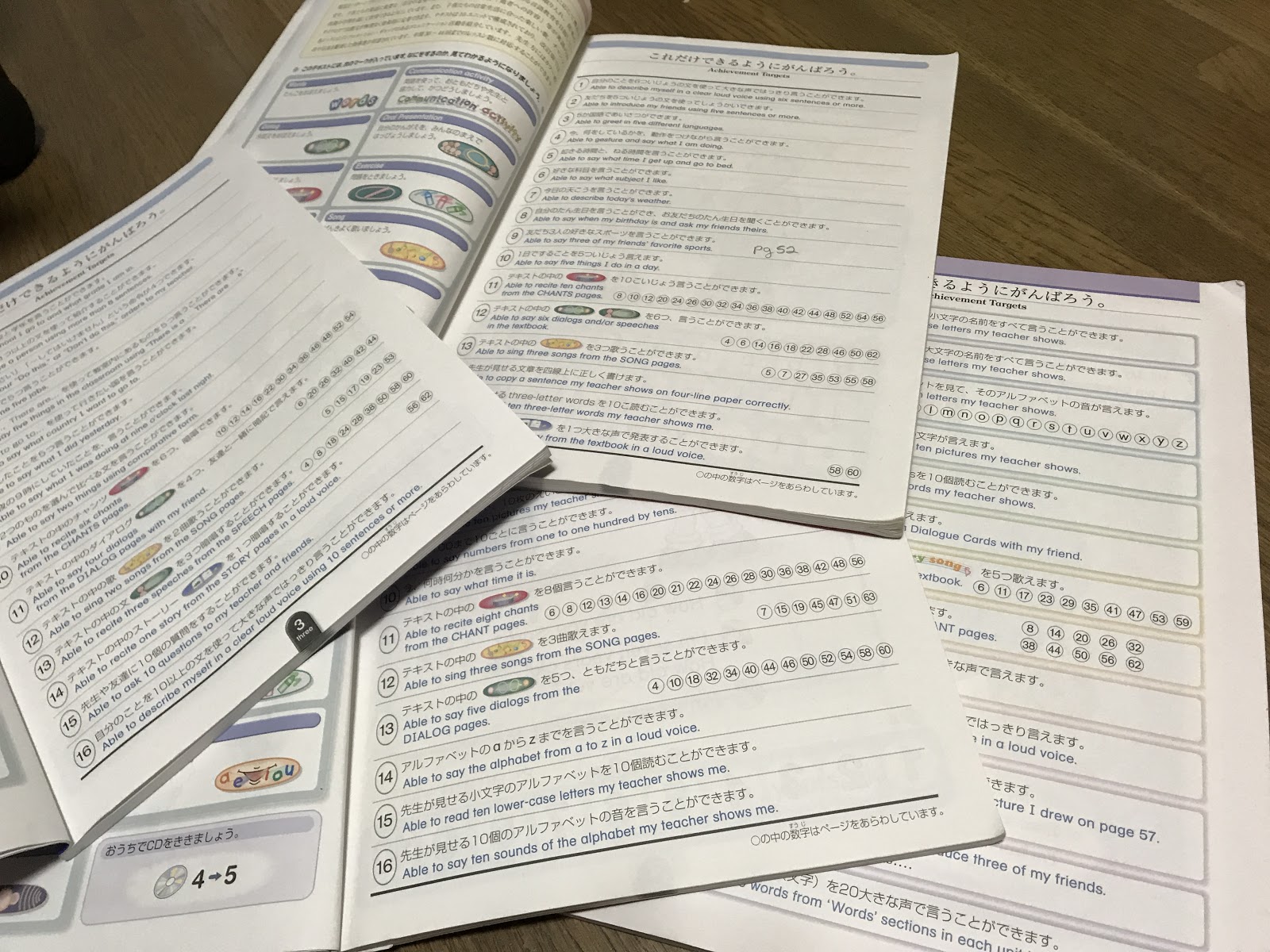
It may seem strange to talk about Achievement Targets at this time of the year, but in fact that slightly unnerving opening page of every volume in the Learning World series (from Bk 1 up) has been on my mind since March when the students were in the finishing stages of their textbooks. Now to be entirely honest with you, for the last 11 years of being a Learning World user, I had largely ignored this page. As my students were quite satisfactorily progressing through the series from one text to the next, completing each page, each task, each chant, each dialogue, I had hardly felt the need to refer to the Achievement Targets. When I did on occasion glance at them, I had merely confirmed that I was doing with the students what had to be done, and everything was good. Despite much head-shaking, finger-waving and passionate pleas from a certain APRICOT staff member (Kawahara Hiromi-sensei) for me to understand the value of this page from the students’ perspective, I was just never overly motivated to.
That changed in March.
In one of my READY classes, I became seriously concerned about a number of students who I felt were going to have a hard time with BOOK 2 this coming year. Throughout the year, they hadn’t really applied themselves to the text as much as they should have, and as much as other students had. They had done very little CD listening at home, and as such they were not confident with READY content at all.
So, for the first time, I brought the class’ attention to the ACHIEVEMENT TARGETS.
The first thing we did was read the Japanese for each one as a class – much to the students’ amusement, as in class we never use Japanese! Interestingly, as we read them the students wanted to try achieving them immediately. (“Let me try! Let me try!”)
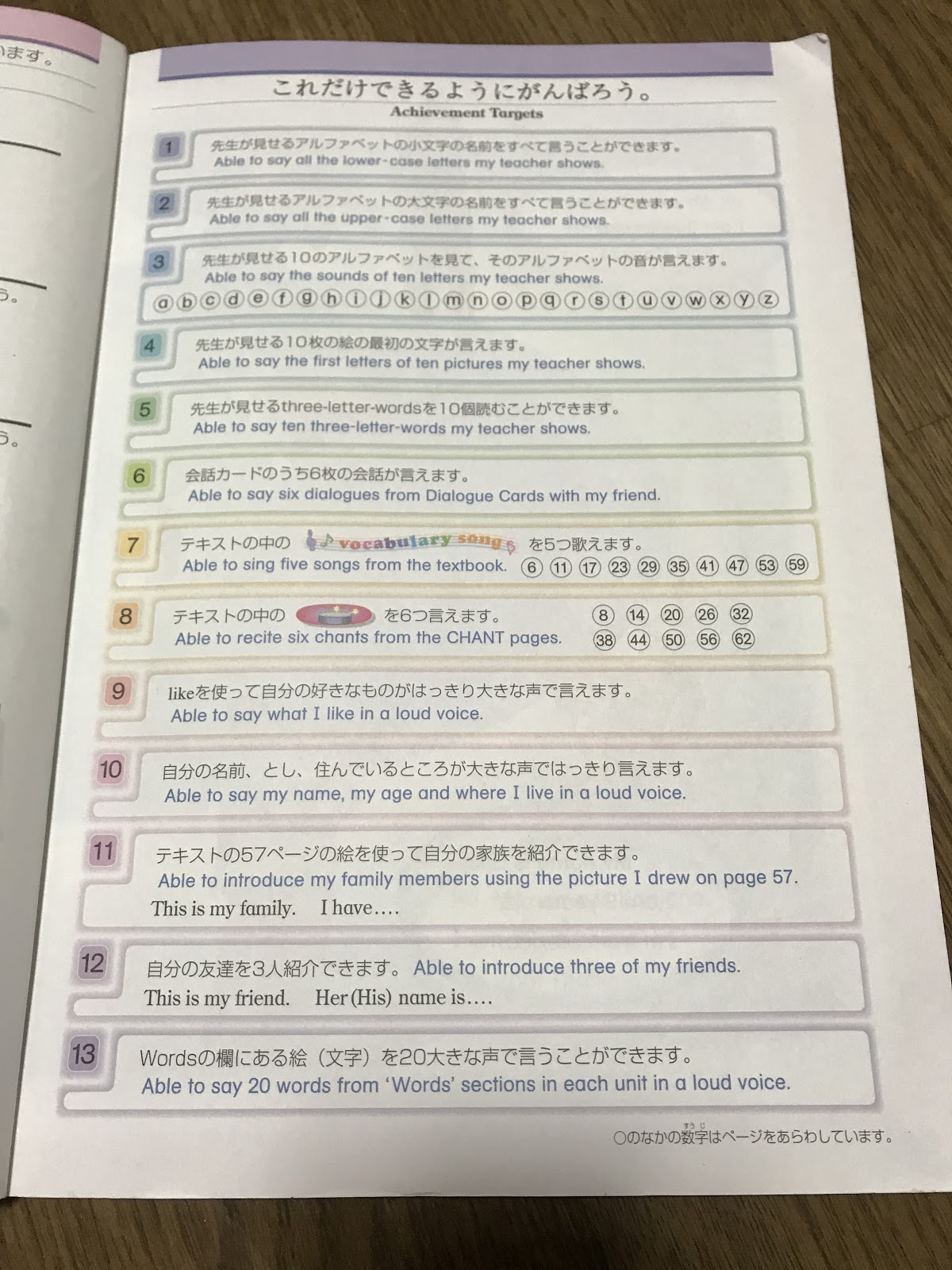
I gave a sticker for each challenge that was completed. This further increased motivation. Even those students who I was worried about wanted to try. But it became evidently clear that they were unable to achieve as many targets as their classmates… For the remainder of the lesson, the students tried to get as many stickers on the page as possible. When it was time for the students to go home, I strongly suggested that they listen to their CD in order to be able to complete more Targets (and get more stickers) next week.
The following week in class before the lesson had even started, all the students had their textbooks open and were practicing! Even those “shaky” students were ready and up for it! They had finally listened to their CD at home! Within the next 30 minutes most of the students had achieved a sticker on every challenge. Others needed one more week to practice at home to get the remaining stickers the following week.
Bringing the students’ attention to the Achievement Targets helped them truly “complete” their textbooks, and become better prepared for the next volume. And because the strategy was such a success in my READY class, I decided to do the same in my Book 1, 2 and 3 classes too. I wasn’t really surprised to see similar results in all classes.
The experience also made me realize the “ACHIEVEMENT TARGETS” are very appropriately named. As students complete each one, it seems they do indeed feel a sense of “achievement”. And with that, now at last I understand Kawahara-sensei’s belief in the value of this page from the students’ perspective. I’m sorry it took me so long to get it!
28. SWAP WORKBOOKS!
The workbooks in the Learning World Series offer more than follow-up study to textbook content. In class they can be used to generate communication experiences for students – especially if you have students swap them!
Many sections of the workbooks require students to fill in segments with their own information. This creates a classic “interview” situation. Students need to ask and answer each other in order to complete the section.
Below is short video footage of a recent class of 7 students studying with “Ready”. Each student bring both the textbook and the workbook to class each lesson.
In this lesson I had the students sit in a wide area around the room. Each student had a classmate’s workbook, not their own. The page to complete was the top section of page 32.

As you can hear from the footage, the students certainly produce English that could do with attention: the pronunciation of “onion”, the omittance of “s” in “grasshopper” etc. However, the simple task of completing a classmate’s workbook page can also produce a very large volume of communication. This too is clear from the footage.
By all means, look for pages in each of the LEARNING WORLD workbooks with sections that require students to fill in their own information. Have students swap books and complete it for their classmates. I think you and they will enjoy this experience!
27. ACTIVITY SHEETS: Kites
At every chance I get to speak with teachers, I always strongly suggest that they put APRICOT’s LEARNING WORLD “ACTIVITY SHEETS” into their classroom. This material is a collection of class communication activities that require students to speak, listen and occasionally read. There are “ACTIVITY SHEETS“ for Book 1, Book 2 and Book 3.
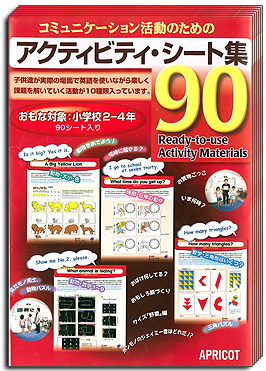
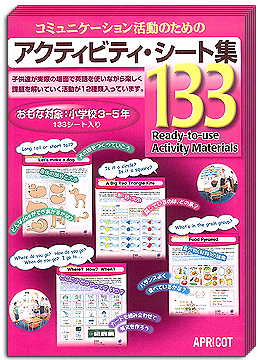
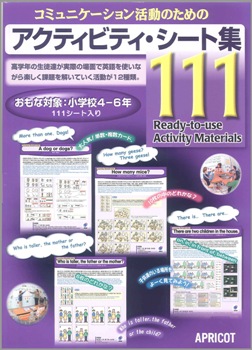
And while each collection match the grammar or vocabulary of units within these texts, they are well worth having even if students aren’t studying with LEARNING WORLD. Indeed, I use “ACTIVITY SHEETS” very often with junior high classes because they can often supplement their school grammar study quite nicely.
Take the “KITES” from “ACTIVITY SHEETS Book 2”.
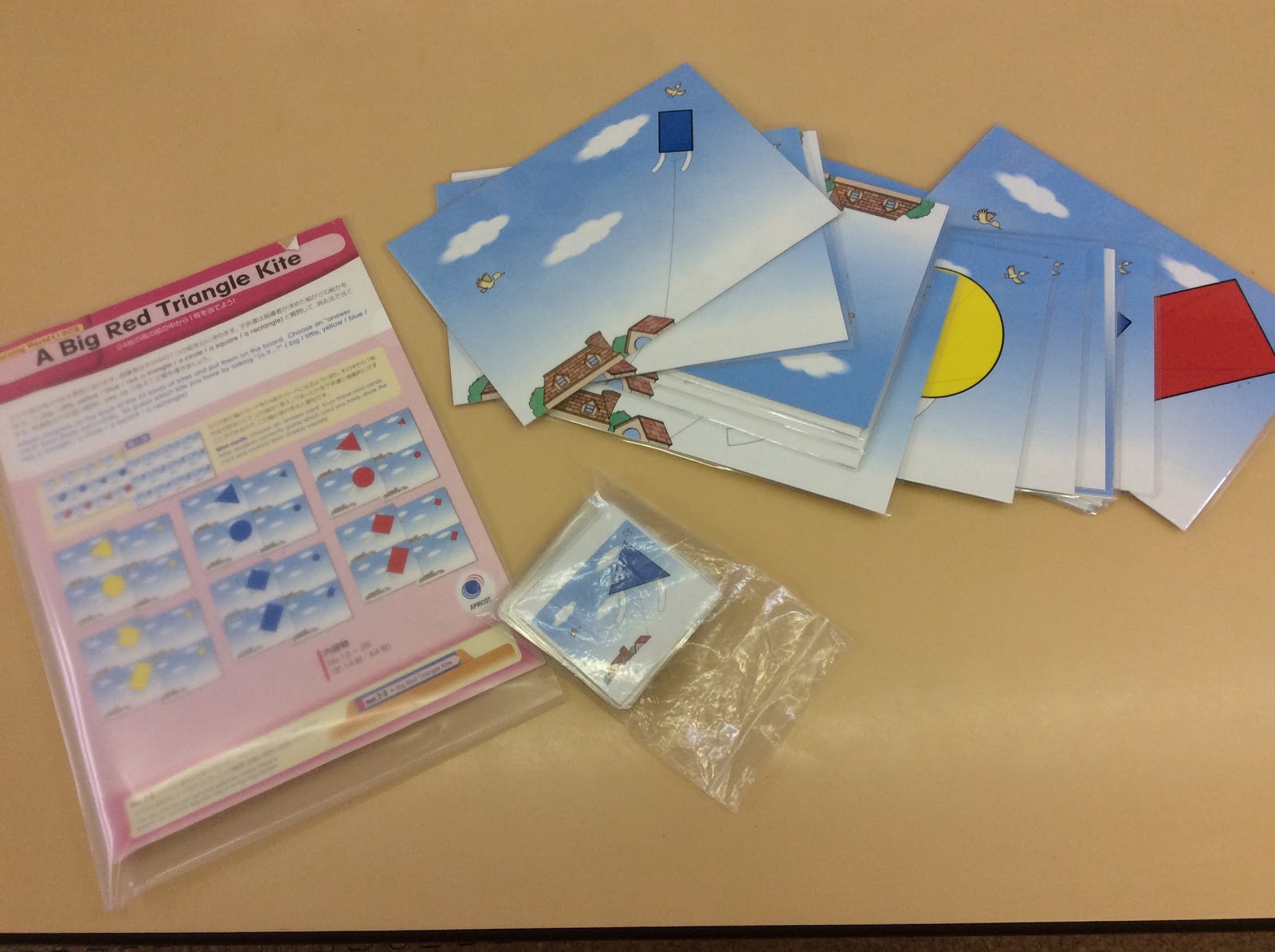
“KITES” consists of pictures of kites in two sizes (big and small), four shapes (circle, square, rectangle, triangle) and three colors (blue, red and yellow). Its original design was to have students practice phrases such as “ls it big?” “Is it a square?” “Is it red?” etc. in a process of elimination to find one kite chosen by the teacher and later a student.
However you can also use the material to familiarize students with English such as “One…. the other…” “One… the others….” “Both…” “Each…” “Every…” etc. This English appears usually in second grade junior high school texts.
Try the following activity:
WARM-UP: Show students all the kites. Have them note the variety in shapes, colors and sizes.
Step1: Without showing the students, take two kites of a different color and place them face down on the whiteboard. Write: “There are two kites.”
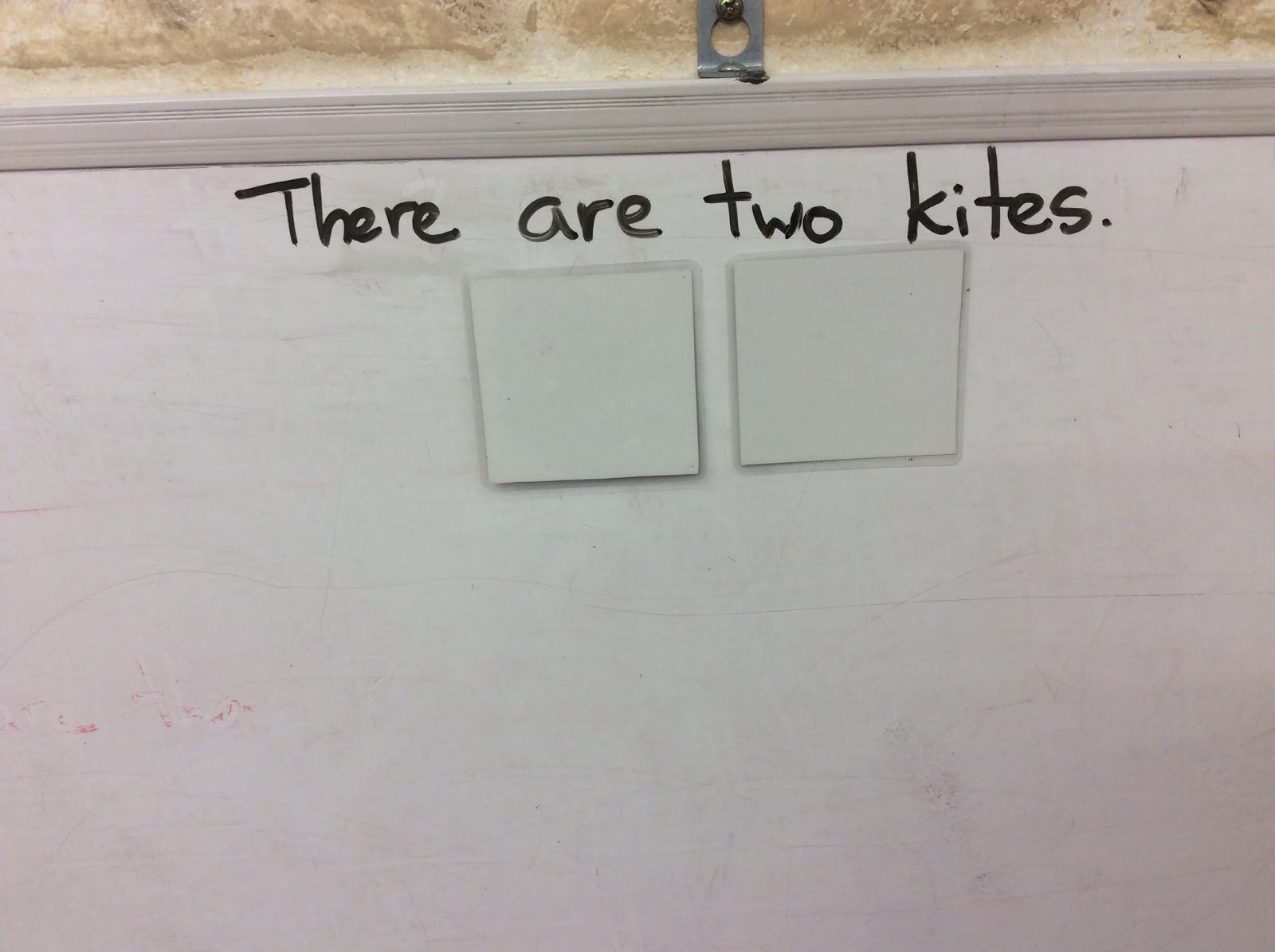
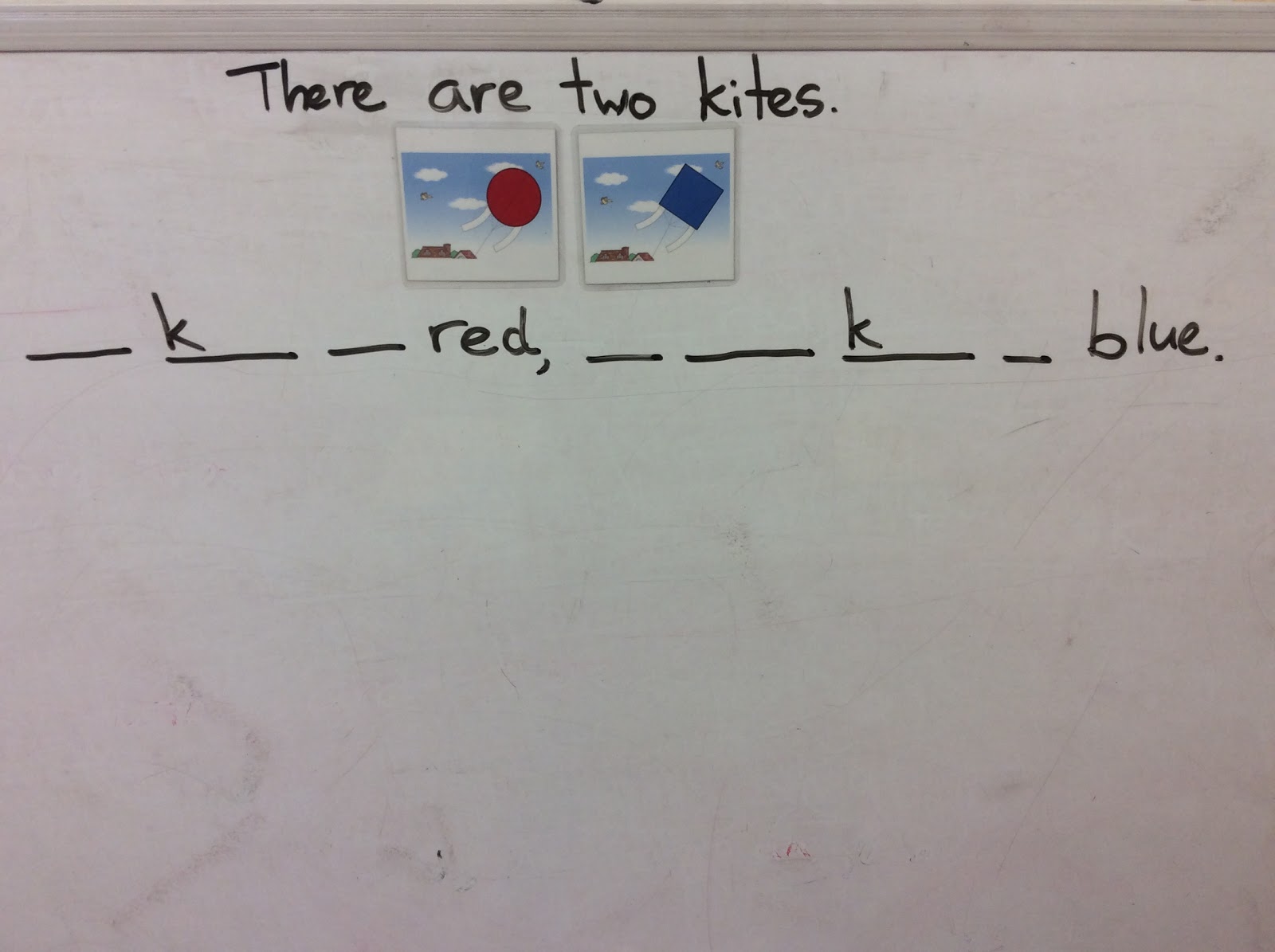
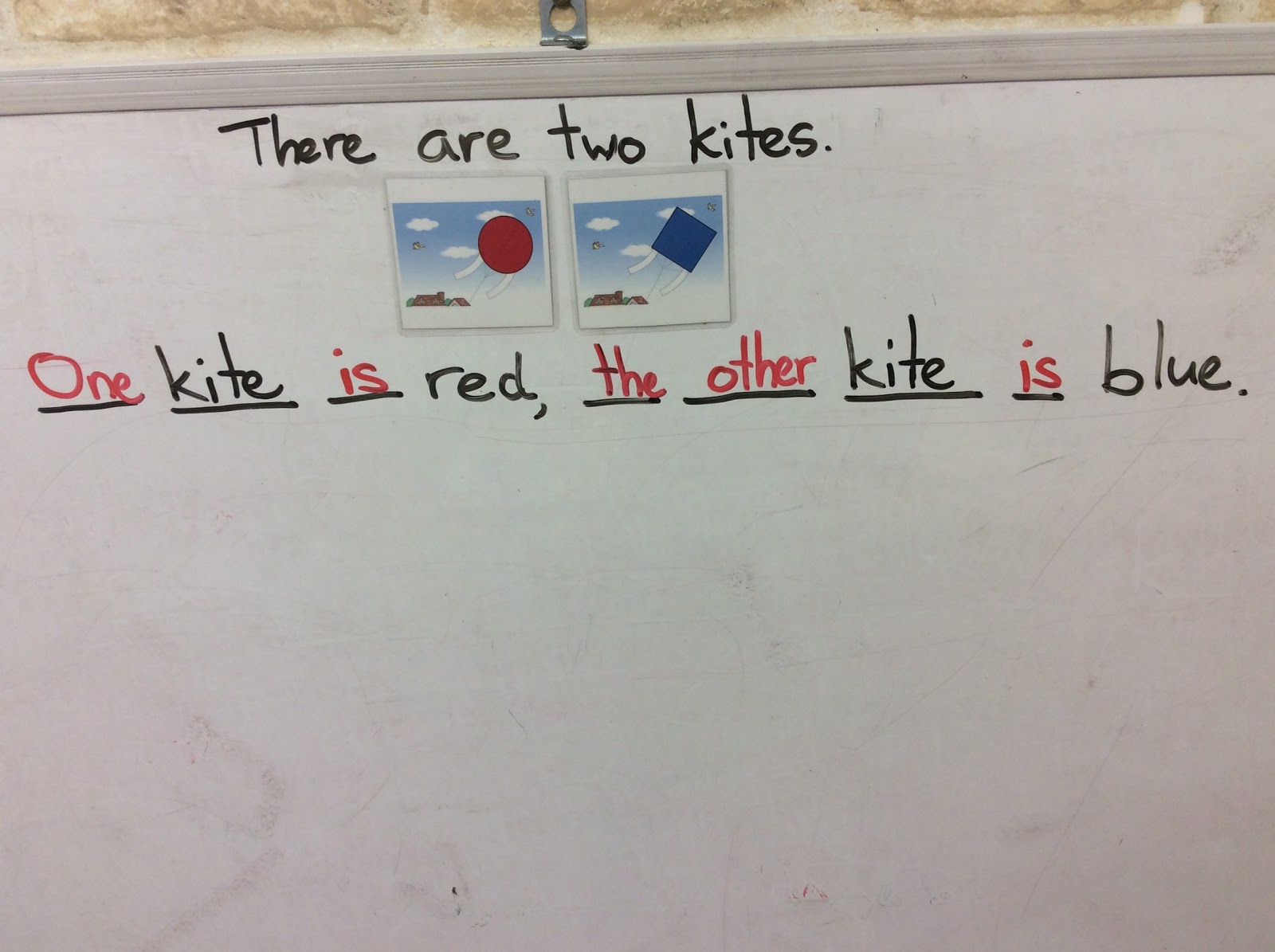
Step 2: “There are three kites.”
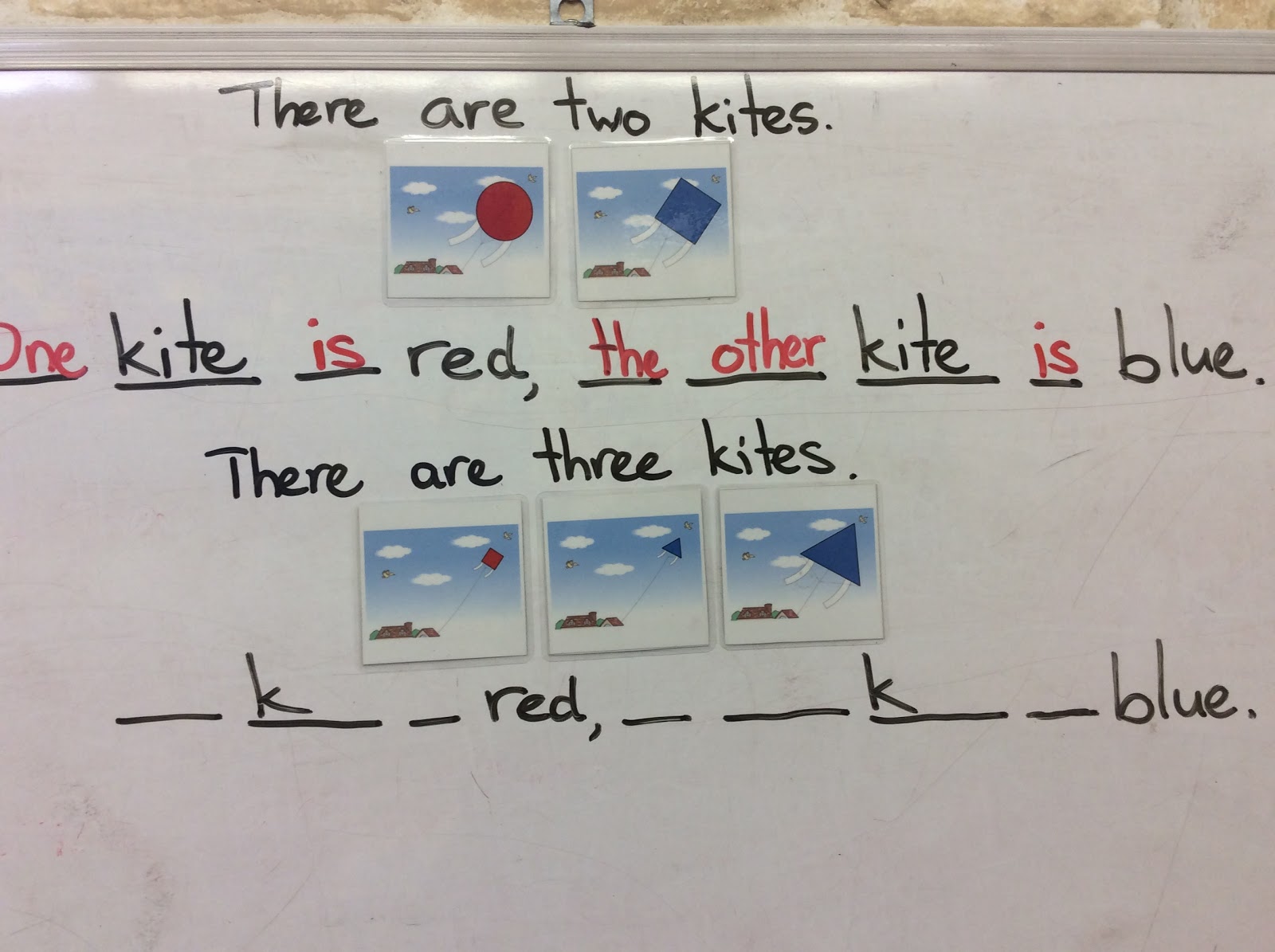
Step 3: “There are three kites” again. In fact, they’re the same three kites. This time “Two blue kites” comes first.
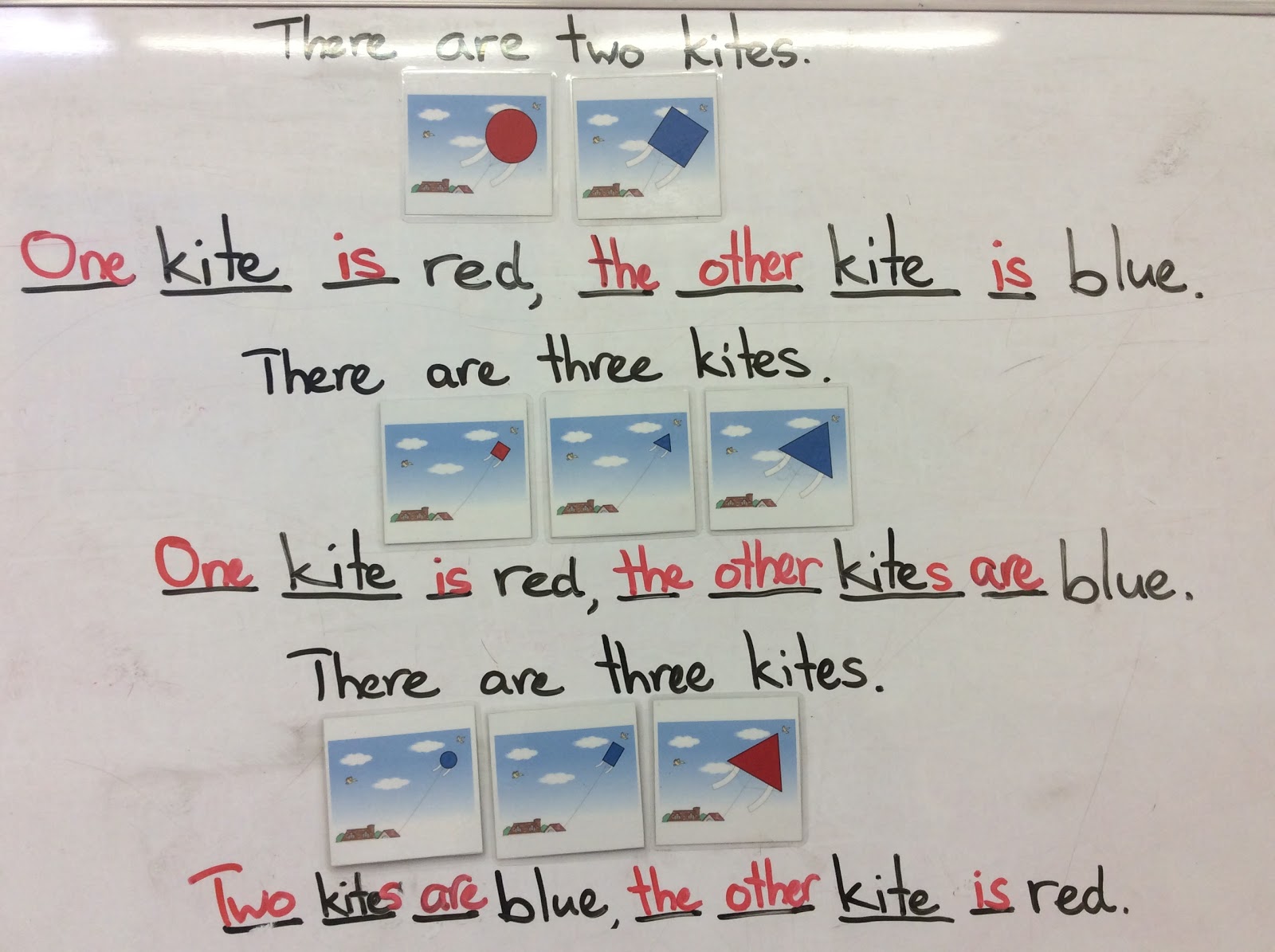
Step 4: “There are two kites.” This time, the word “kite” is dropped.
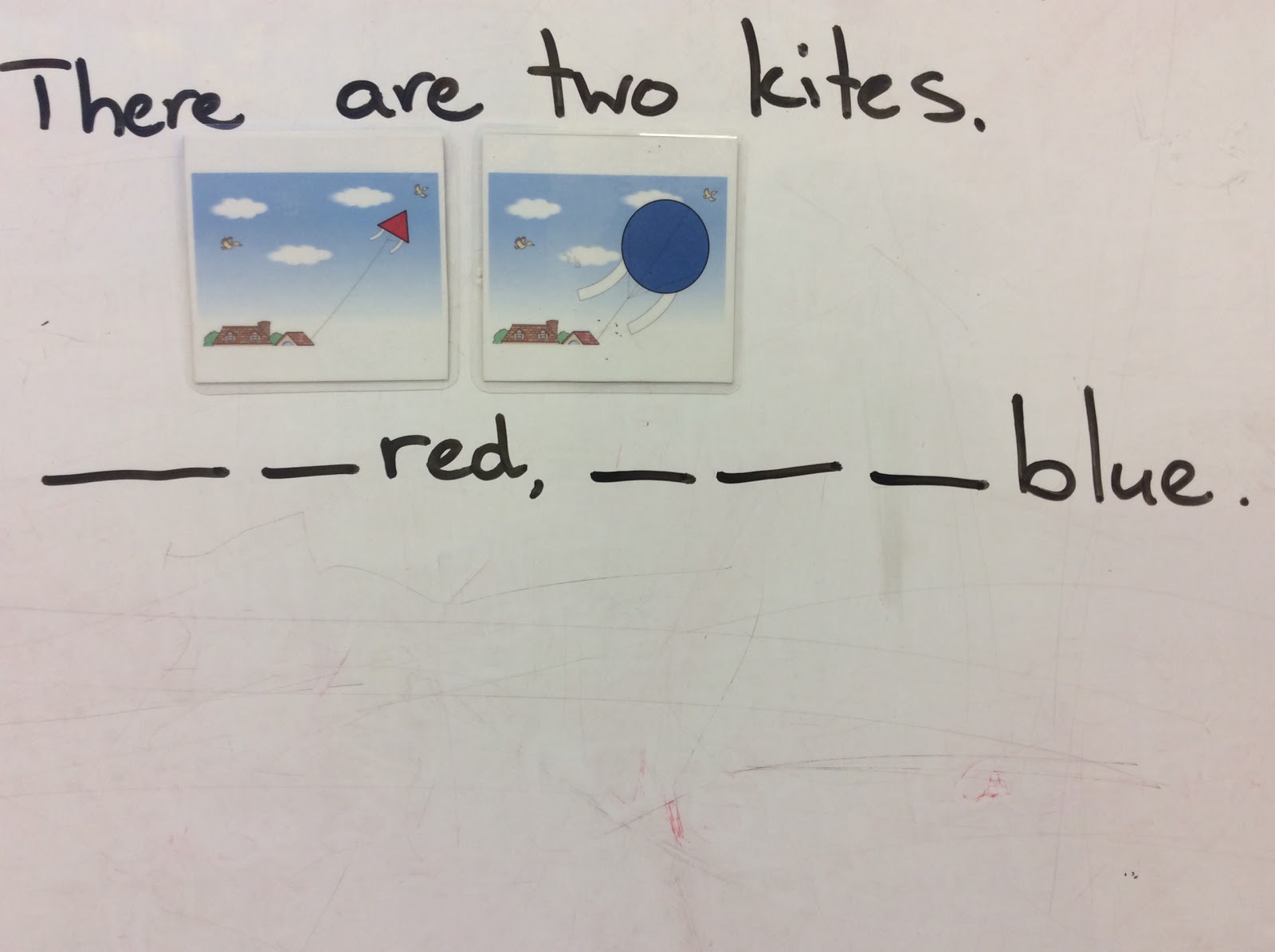
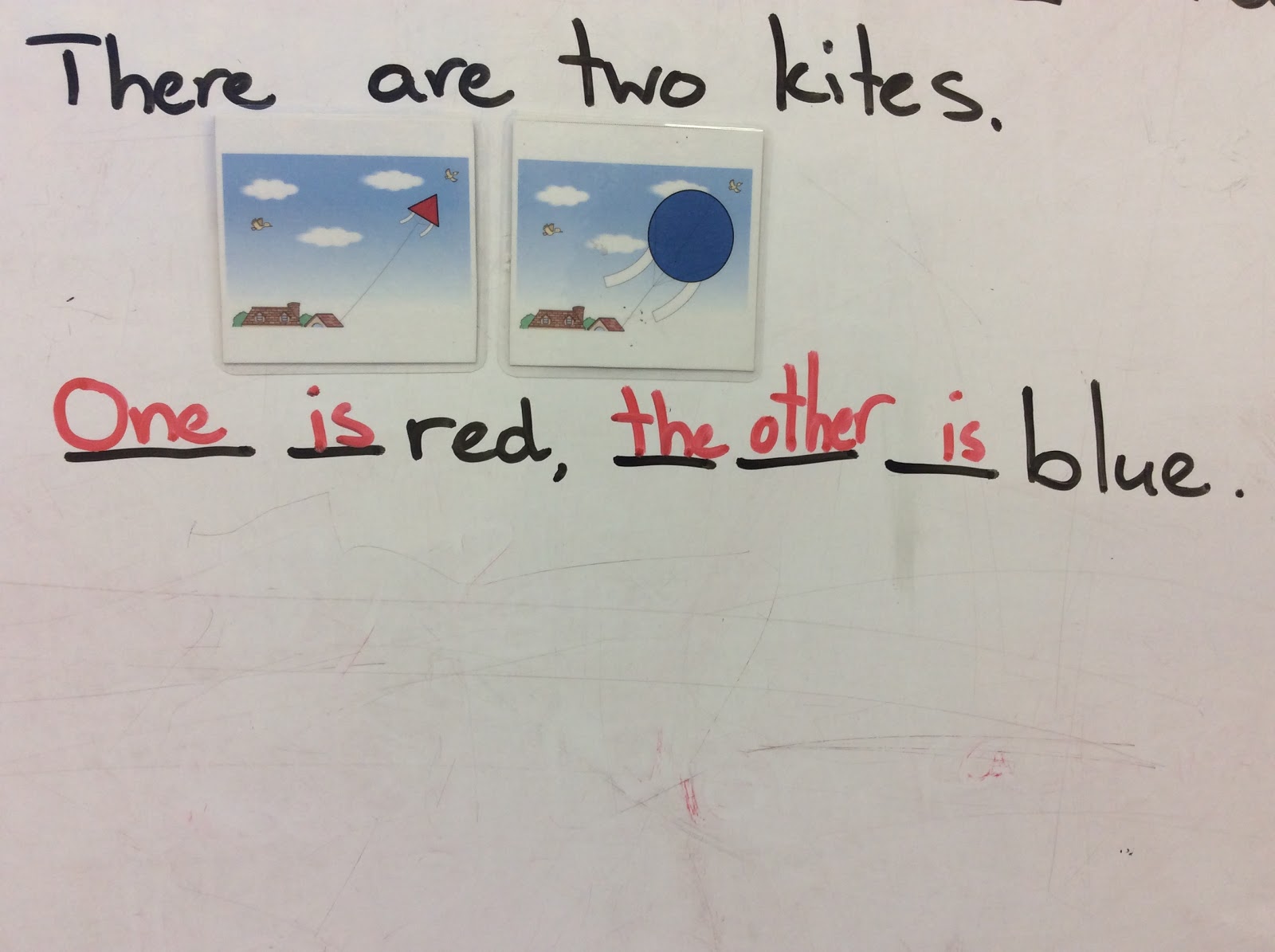
Then three kites:
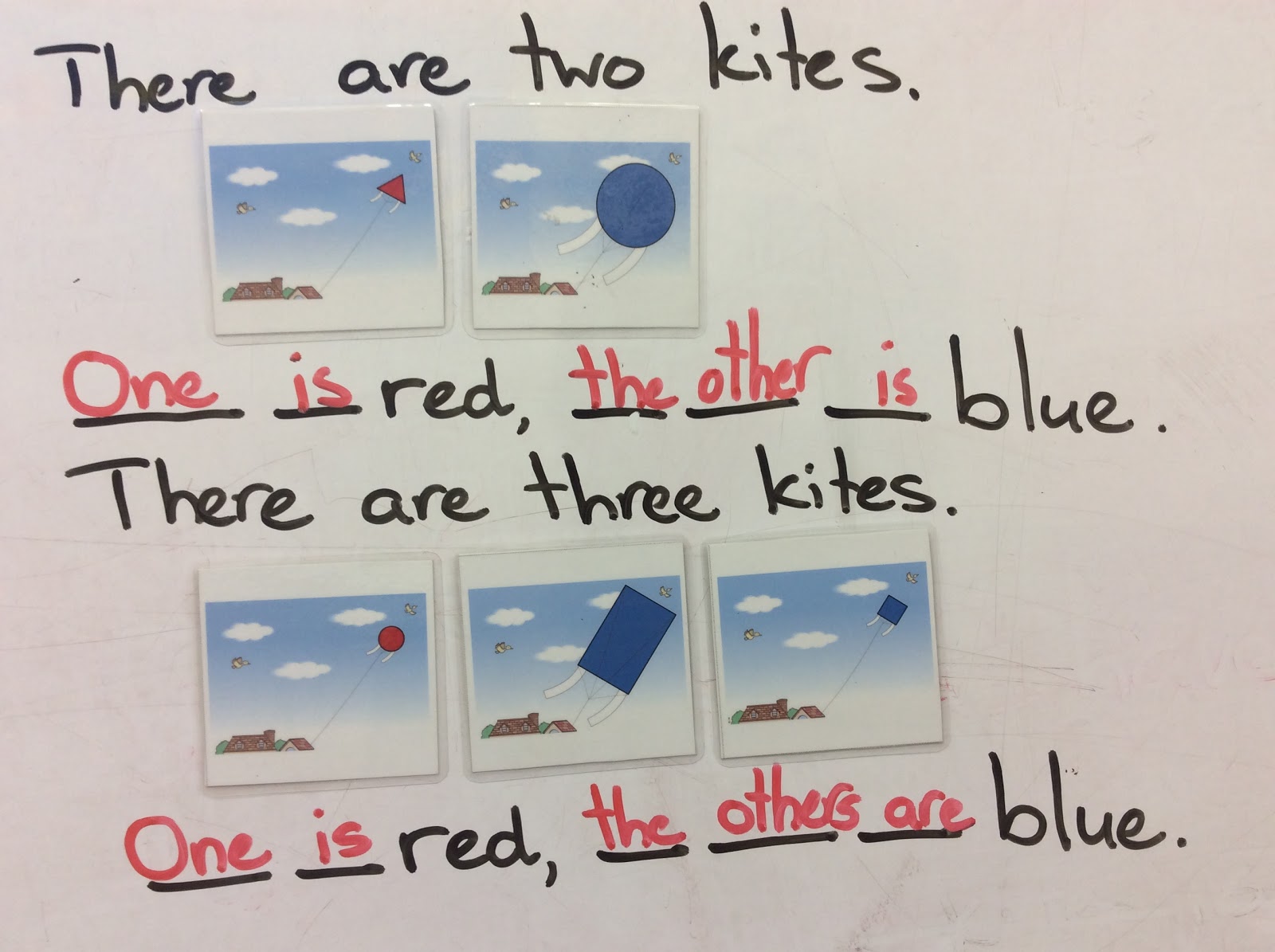
Step 5: A new color will introduce the English “another”.
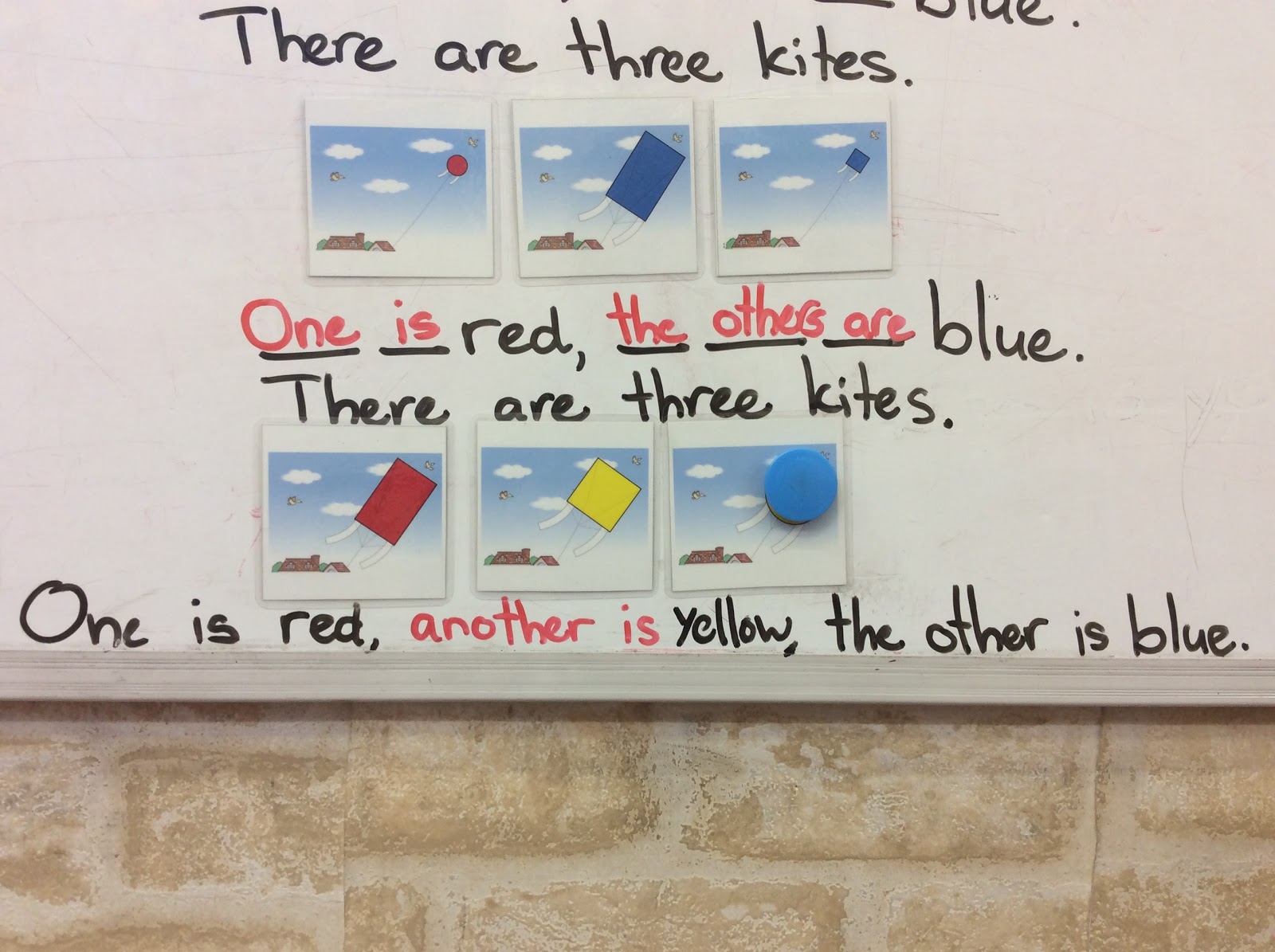
After Step 5, the English “both” and “all” can also optionally be introduced:
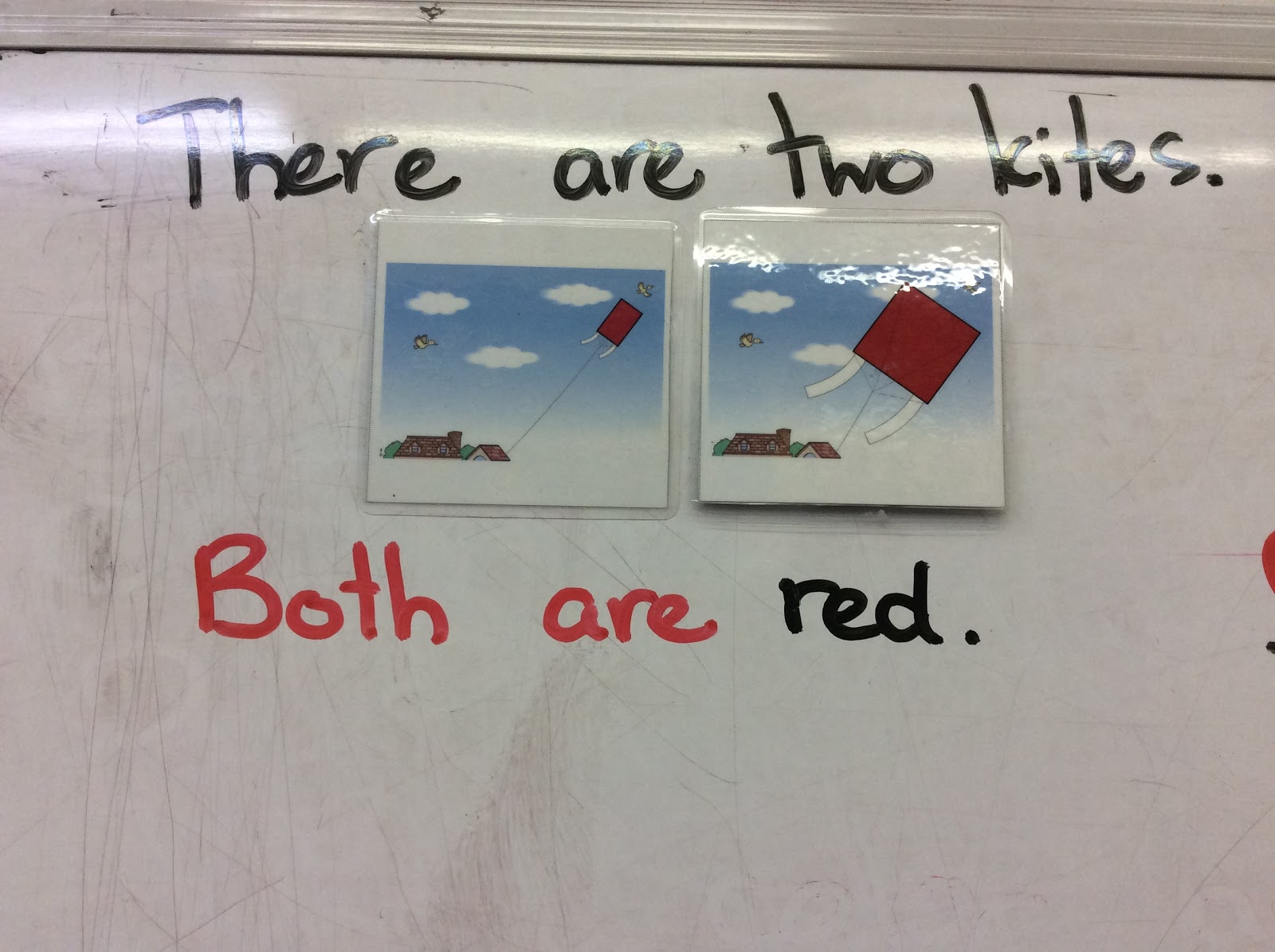
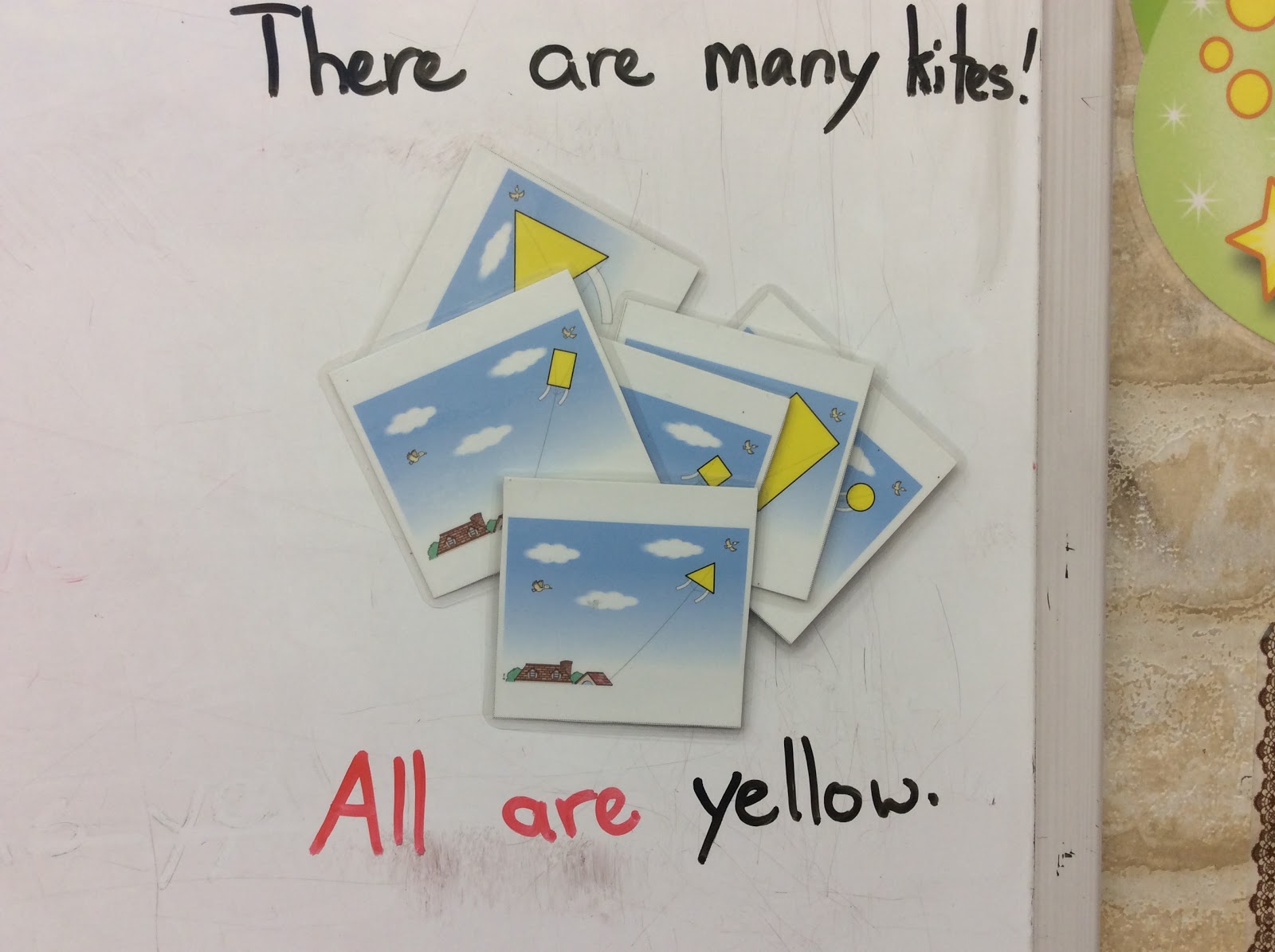
The materials from ACTIVITY SHEETS are excellent when they’re used exactly as they are intended. However with a little imagination they can also be used effectively to introduce a lot other language and concepts.
Definitely get them for your classroom this year!!
26. JUNIOR HIGH TESTS
It’s late March. A new school year is just around the corner.
As a teacher, I rarely give thought to my counterparts working away in the public junior high education system. We are “counterparts” in name only: “teachers”. But our work couldn’t be more different.
They teach English as a system to memorize for the purpose of passing tests, I teach English for the purpose of communication.
They teach English by and large in Japanese, I teach English in English.
My approach takes students’ self-esteem into deep consideration, their approach does not.
They give feedback to students’ efforts in the form of noughts and crosses on answer sheets, I give students the opportunity to self-correct problem areas, and all effort is good effort.
I take care to have my students feel success with English by having them actually use it, my junior high counterparts don’t.
And I’ll be frank; not only do I feel so very little in common with public junior English teachers, I often feel that much of their work goes against what I’m trying to achieve with my students.
Dwelling on our un-relationship is not productive for me so I don’t. However my students do on occasion bring our differences to my unwanted attention – especially when they discuss their tests and test scores. Consider the following end-of-term English “speaking test” as described to me by one of my 1st grade students…
In a one-on-one setting, a native-English teacher asked students a series of questions each of which were unrelated and to which there was no context. The questions were given in advance, and students were told previously they would be asked these very questions in the very same order. Students were required to memorize and produce the answers. Questions included “When is your birthday?” and “Which do you prefer, coffee or tea?”
During the test, if the student answered anything less than the memorized answer, it was considered incorrect. For example if the students answered “Tea” instead of “I prefer tea”, it was marked as incorrect. Similarly, if students answered “November 15th” or even “My birthday is November 15th” instead of “My birthday is on November 15th”, it was marked as incorrect. A total score out of 10 was calculated.
Now OK, I haven’t met or talked with the teachers who designed and conducted this test so I cannot know their thinking behind it. But I must say that I have some serious qualms about this test, particularly as it relates directly to students’ assessment of their speaking ability.
You would imagine that a “speaking test” would have some element of communication to it, but there was none here as the questions and their order were pre-given. The Monbukagakusho guideline of English education stipulates that its purpose is communication.
My student communicates in English well, but he spent valuable time before the test memorizing the petty detail to the answers his teacher wanted to hear. In the end, he lost a point because he forgot the word “on” in his birthday answer. (Incidentally, omitting “on” is NOT incorrect because “on” is only required when referring to something like a “meeting” or “appointment” which has a starting time and a finishing time: “My appointment is on November 15th.” Birthdays last the whole day so “on” is irrelevant. “My birthday is November 15th” is entirely acceptable.)
English tests like the one described here send a totally unhelpful message to our students. Instead of being a valuable and important tool for learning about others and sharing one’s ideas, English becomes a process of accurate recitation, of form over content, and the slightest technical error costs you marks. With English education like this, it’s no wonder that Japanese communication ability in English is low compared to nearly all countries where English is a foreign language.
It’s late March, and a new school year is just around the corner. So I call on my counterparts in the field of public education; instead of working against each other, let’s work more closely together. Let’s meet up with other English teachers in the community, join their teacher-development meetings and study groups. Let’s share perspectives on our students, their future and on the role of the English language within it. We are all teachers but currently we are doing disservice to our students and our profession. I believe that with cooperation we can work for our students more efficiently and effectively.
Hopefully too I may be able to have a conversation with my students about their school English education without cringing!












